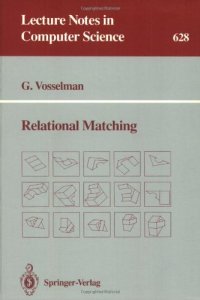
Ebook: Relational Matching
Author: G. Vosselman (eds.)
- Tags: Artificial Intelligence (incl. Robotics), Pattern Recognition, Models and Principles, Software Engineering/Programming and Operating Systems
- Series: Lecture Notes in Computer Science 628
- Year: 1992
- Publisher: Springer-Verlag Berlin Heidelberg
- Edition: 1
- Language: English
- djvu
Relational matching is a method for finding the best correspondences betweenstructural descriptions. It is widely used in computer vision for the recognition and location of objects in digital images. For this purpose, the digital images and the object models are represented by structural descriptions. The matching algorithm then has to determine which image elements and object model parts correspond. This book is the result of abasic study of relational matching. The book focuses particularly on the evaluation of correspondences. In order to find the best match, one needs a measure to evaluate the quality of a match. The author reviews the evaluation measures that have been suggested over the past few decades and presents a new measure based on information theory. The resulting theorycombines matching strategies, information theory, and tree search methods. For the benefit of the reader, comprehensive introductions are given to all these topics.
Relational matching is a method for finding the best correspondences betweenstructural descriptions. It is widely used in computer vision for the recognition and location of objects in digital images. For this purpose, the digital images and the object models are represented by structural descriptions. The matching algorithm then has to determine which image elements and object model parts correspond. This book is the result of abasic study of relational matching. The book focuses particularly on the evaluation of correspondences. In order to find the best match, one needs a measure to evaluate the quality of a match. The author reviews the evaluation measures that have been suggested over the past few decades and presents a new measure based on information theory. The resulting theorycombines matching strategies, information theory, and tree search methods. For the benefit of the reader, comprehensive introductions are given to all these topics.